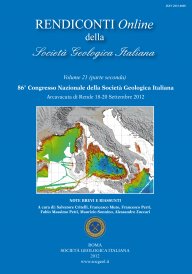
The land bridge between Europe and Sicily over the past 40 kyrs: timing of emersion and implications for the migration of Homo sapiens
Fabrizio Antonioli (°), Valeria Lo Presti (°°), Maurizio Gasparo Morticelli (°°), Marcello A. Mannino (°°°), Kurt Lambeck (*), Luigi Ferranti (**), Laura Bonfiglio (***), Gabriella Mangano (***), Gian Maria Sannino (°), Stefano Furlani (+), Attilio Sulli (°°), Maria Rita Palombo (++) & Simone Pietro Canese (+++)
(°) ENEA, Casaccia, Roma, Italy.
(°°) Dipartimento di Scienze della Terra e del Mare, Università di Palermo, Italy.
(°°°) Department of Human Evolution, Max Planck Institute for Evolutionary Anthropology, Leipzig, Germany.
(*) Australian National University, Canberra, Australia.
(**) Dipartimento di Scienze della Terra, Università di Napoli, Italy.
(***) Dipartimento di Scienze della Terra, Università di Messina, Italy.
(+) Dipartimento di Scienze di Matematica e Geoscienze, Università di Trieste, Italy.
(++) Dipartimento di Scienze della Terra, Sapienza Università di Roma, Italy.
(+++) ISPRA, Roma, Italy.
Abstract
Keywords
Get Full Text